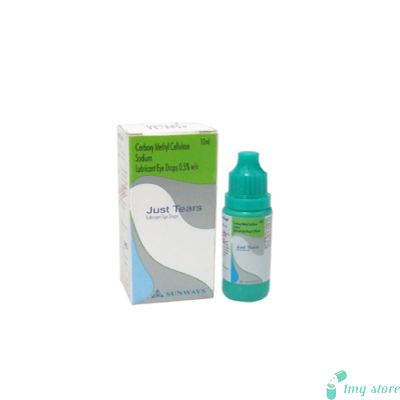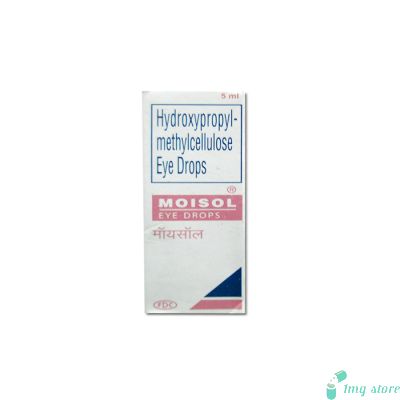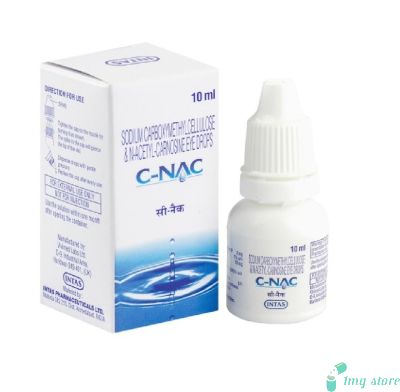Tear Drops (Carboxymethylcellulose)
Tear Drops, containing Carboxymethylcellulose, are a lubricating eye solution. They provide relief from dryness, irritation, and discomfort in the eyes.
Introduction of Tear Drops (Carboxymethylcellulose)
In the realm of eye care, maintaining optimal ocular health and comfort is paramount. Carboxymethylcellulose Drops, often referred to as artificial tears, play a pivotal role in this pursuit. These drops are a vital tool in the management and treatment of various eye conditions, providing relief from dryness, irritation, and discomfort. In this comprehensive guide, we will delve into the various facets of Carboxymethylcellulose Drops, including dosage information, usage, potential side effects, precautions, and interactions with other medications.
Carboxymethylcellulose Dosage Information
Proper Dosage: The correct dosage of Carboxymethylcellulose Drops may vary depending on the specific product and the severity of your eye condition. However, in most cases, one or two drops should be instilled into the affected eye(s) as needed. It's essential to read the product label and follow the instructions provided by your healthcare provider or pharmacist.
Frequency of Use: Carboxymethylcellulose Drops are typically used as often as required to relieve dryness and discomfort. However, it's advisable not to exceed more than one drop every hour unless directed otherwise by a healthcare professional.
Missed Dose: If you miss a dose of Carboxymethylcellulose Drops, simply administer the missed dose as soon as you remember. If it is close to the time for your next scheduled dose, skip the missed dose and resume your regular dosing schedule. Do not double up on doses to compensate for a missed one.
Overdose: Carboxymethylcellulose Drops are considered safe and have a low risk of overdose. However, if you accidentally ingest or apply an excessive amount of the solution, rinse your eyes thoroughly with lukewarm water and seek immediate medical attention if irritation or discomfort persists.
Pediatric Dosage: When using Carboxymethylcellulose Drops in children, it is crucial to follow pediatric-specific dosing guidelines, which may differ from those for adults. Consult a healthcare provider or pharmacist for appropriate instructions.
Carboxymethylcellulose vs. Alternatives:
In the realm of artificial tears, Carboxymethylcellulose stands out as a preferred choice for its effectiveness in relieving dryness and discomfort. When compared to alternatives, it often ranks favorably due to its gentle yet soothing properties. However, individual preferences may vary, so consulting with an eye care professional can help determine the most suitable option for your specific needs.
Alternatives to Carboxymethylcellulose:
In the realm of artificial tears and eye lubricants, several alternatives to Carboxymethylcellulose exist to address dry eye symptoms and other ocular discomforts. One commonly used alternative is saline solution, which is a simple, sterile saltwater solution that can provide temporary relief for mild dryness but may not offer the same extended lubrication as Carboxymethylcellulose. Additionally, there are lipid-based eye drops, which mimic the oily layer of natural tears and are effective for certain types of dry eye. Some individuals with severe dry eye may opt for prescription medications like Cyclosporine or lifitegrast, which can help manage chronic dry eye conditions. It's important to consult with an Eye professional to determine the most suitable alternative based on your specific eye health needs and the severity of your symptoms. 1mgstore.com offers a range of alternatives to Carboxymethylcellulose eye drops, providing customers with various options for lubricating and relieving dry eyes. These alternatives cater to different preferences and needs, ensuring that individuals seeking relief from dryness and eye discomfort can find a suitable product on our platform.
Buying Carboxymethylcellulose:
When it comes to purchasing Carboxymethylcellulose, look no further than our trusted website, 1mgstore.com. We offer a convenient and reliable platform for procuring this essential eye care product. With a user-friendly interface and secure payment options, we prioritize your shopping experience, ensuring that you can access the eye care solutions you need with ease.
Carboxymethylcellulose Experiences:
Many individuals have shared positive experiences with Carboxymethylcellulose drops. Users commonly report relief from dry eye symptoms, including itching and irritation. These drops have become a staple in the daily eye care routine of countless people, enhancing ocular comfort and overall well-being.
Some of the precautionary measures to be taken while using Tear Drops (Carboxymethylcellulose)
- Allergies and Sensitivities: Before using Carboxymethylcellulose Drops, inform your healthcare provider of any known allergies or sensitivities to eye drops or their components. This information can help prevent allergic reactions.
- Contact Lenses: If you wear contact lenses, remove them before instilling Carboxymethylcellulose Drops. Wait at least 15 minutes before reinserting your lenses to prevent any potential interactions.
- Pregnancy and Breastfeeding: While Carboxymethylcellulose Drops are generally considered safe during pregnancy and breastfeeding, it is advisable to consult with a healthcare professional before use, especially if you have any concerns.
- Children and Infants: When using Carboxymethylcellulose Drops in children or infants, follow pediatric dosing instructions precisely. Avoid self-medicating a child without guidance from a healthcare provider.
- Sterility: Ensure that the tip of the dropper bottle does not come into contact with any surfaces, including the eye, to maintain sterility and prevent contamination.
Common infections that is often prescribed for Tear Drops (Carboxymethylcellulose) include:
- Dry Eye Syndrome: Carboxymethylcellulose Drops are primarily used to relieve the symptoms of Dry Eyes syndrome, a condition characterized by insufficient tear production or poor tear quality. These drops provide much-needed moisture and lubrication to the eyes, alleviating dryness, itching, and burning sensations.
- Contact Lens Discomfort: Contact lens wearers often experience discomfort due to reduced tear film stability. Carboxymethylcellulose Drops can be used to hydrate the eye and improve lens comfort.
- Eye Irritation: Irritation caused by environmental factors such as wind, smoke, or prolonged screen time can be eased with the use of Carboxymethylcellulose Drops. They soothe and refresh the eyes.
- Post-Surgery: After certain eye surgeries, including LASIK, PRK, or cataract surgery, the eyes may feel dry and irritated. Carboxymethylcellulose Drops are prescribed to enhance post-operative comfort and promote healing.
- Allergy Relief: Allergic reactions that affect the eyes, such as hay fever or allergic conjunctivitis, can result in redness and itching. Carboxymethylcellulose Drops can offer symptomatic relief in such cases by washing away allergens and soothing irritated eyes.
Some of the secondary Effects of Tear Drops (Carboxymethylcellulose)
- Mild Irritation: Some users may experience mild and temporary irritation, stinging, or burning upon instilling Carboxymethylcellulose Drops. This discomfort usually subsides quickly. If it persists or worsens, discontinue use and consult a healthcare professional.
- Allergic Reactions: Although rare, allergic reactions to Carboxymethylcellulose Drops may occur. Symptoms can include severe redness, itching, swelling, or rash. If you suspect an allergy, cease using the product and seek medical attention immediately.
- Blurry Vision: In some instances, Carboxymethylcellulose Drops may cause temporary blurred vision after administration. It is advisable to wait until your vision clears before engaging in activities that require visual acuity, such as driving.
- Eye Redness: Paradoxically, prolonged use of certain eye drops, including Carboxymethylcellulose Drops, may lead to eye redness. If you notice persistent redness, consult your healthcare provider to explore alternative treatments.
- Eye Discharge or Pain: While uncommon, eye discharge or pain can occur as a side effect of using Carboxymethylcellulose Drops. If these symptoms manifest or worsen, discontinue use and seek medical advice promptly.
Frequently Asked Queries About Carboxymethylcellulose Drops
Q1. Can Carboxymethylcellulose Drops Be Used with Contact Lenses?
Answer: Yes, you can use Carboxymethylcellulose Drops with contact lenses. However, remove your lenses before applying the drops and wait at least 15 minutes before reinserting them.
Q2. Is Carboxymethylcellulose Safe for Children?
Answer: Carboxymethylcellulose Drops can be safe for children when used according to pediatric dosing guidelines. Consult a healthcare provider for proper instructions.
Q3. Can I Drive After Using Carboxymethylcellulose Drops?
Answer: If you experience temporary blurry vision after using the drops, wait until your vision clears before driving or operating machinery.
Q4. Are Allergic Reactions Common with Carboxymethylcellulose Drops?
Answer: Allergic reactions are rare but possible. If you experience severe redness, itching, or swelling, discontinue use and seek medical attention.
Q5. Can I Use Carboxymethylcellulose Drops Alongside Glaucoma Medications?
Answer: Discuss the use of Carboxymethylcellulose Drops with your healthcare provider if you are taking glaucoma medications. They can provide guidance to prevent potential interactions.
Significant Drug Interactions that Require Attention For Tear Drops (Carboxymethylcellulose)
- Prescription Eye Medications: If you are using prescription eye medications, consult your healthcare provider or pharmacist before using Carboxymethylcellulose Drops. Using multiple eye drops concurrently can affect the absorption and efficacy of each medication.
- Oral Medications: While Carboxymethylcellulose Drops are applied topically to the eye, some oral medications may interact with them. Discuss your full medication list with your healthcare provider to rule out any potential interactions.
- Other Eye Drops: Using multiple types of eye drops simultaneously can dilute the effectiveness of each product. If your eye care regimen involves multiple eye drops, follow your healthcare provider's guidance on the appropriate timing and order of administration.
- Contact Lens Solutions: Avoid using Carboxymethylcellulose Drops immediately before or after cleaning and disinfecting your contact lenses, as certain chemicals in the drops may interact with contact lens solutions.
- Eye Supplements: If you are taking dietary supplements or vitamins specifically for eye health, consult your healthcare provider to ensure compatibility with Carboxymethylcellulose Drops and to avoid potential interactions.
| Manufacturer | : | Sun Pharma, India |
| Equivalent Brand | : | Tear Drops |
| Generic Search | : | Carboxymethylcellulose Sodium |










